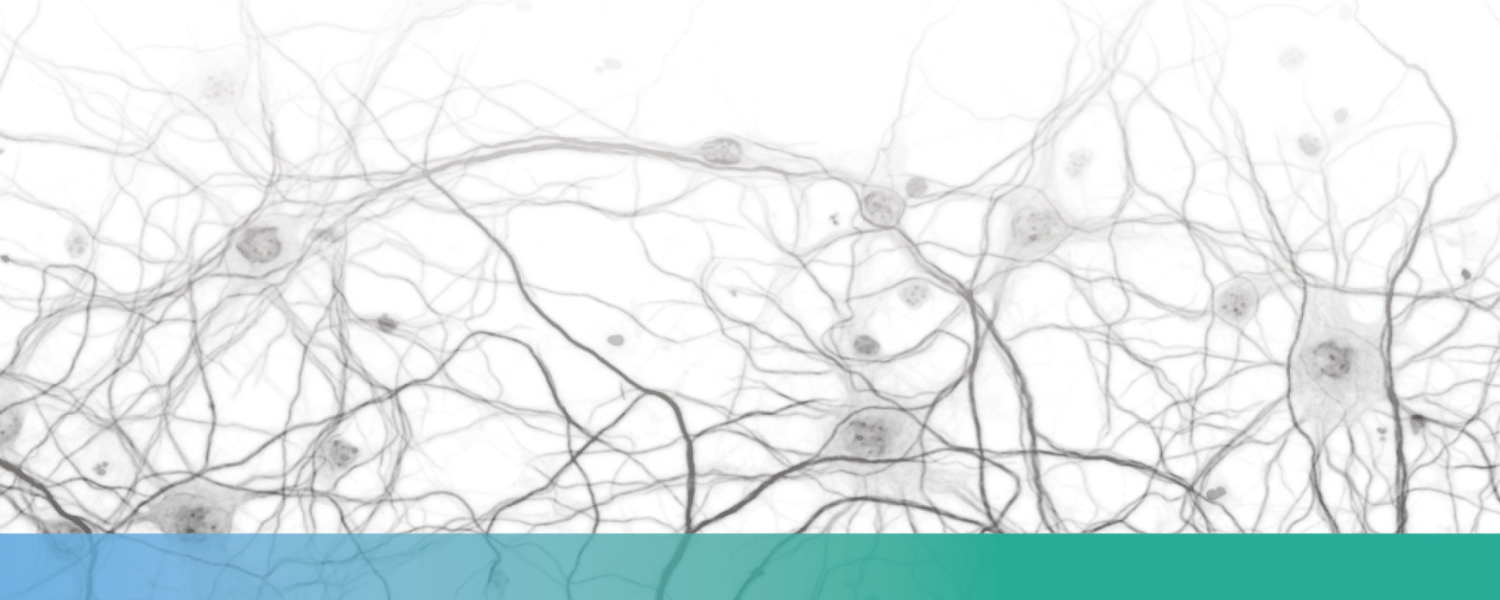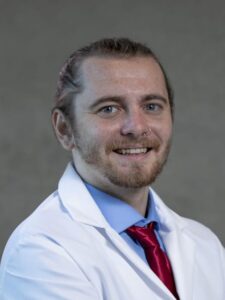2025 Winter Neurodegeneration Summit: What’s on the horizon in neurodegeneration research?
February 21, 2025

Collaboration and connection are critically important in science.
Now in its second year, the Winter Neurodegeneration Summit provides an outstanding opportunity for early career scientists at Van Andel Institute and Michigan State University to discuss their research, network with others in the field and practice their presentation skills.
This year’s organizers are VAI graduate students Thomas Goralski and Vanessa Howland, and MSU graduate students Michael Kubik and Brishti White. As the next generation of leaders in their fields, they are helping advance the future of neurodegenerative disease research.

We caught up with them to discuss the most exciting things about their work and what they see on the horizon in neurodegeneration research.
What is the most exciting thing happening in your field?
Thomas: In my view, one of the most exciting things happening in molecular biology is a rise of foundation models. These models use AI to conduct experiments across different contexts and questions.

Vanessa: I think one of the most exciting developments in Parkinson’s disease research is the growing momentum in understanding genetic contributions to the disease. While Parkinson’s has traditionally been considered a sporadic condition, researchers have now identified dozens of genes that can influence disease risk. This growing understanding is driving the development of targeted therapeutics, which could one day lead to real clinical benefits for patients.
Michael: I’m excited to see biomarkers that can be used for earlier detection of neurodegenerative diseases. I hope to see people with prodromal (early) symptoms get access to therapies that will delay or prevent the progression of future symptoms.
How do you see your research impacting the broader field?

Thomas: My research has determined the toxicity conferred by misfolded α-synuclein pathology to neurons, and the potential molecular underpinnings of neuronal vulnerability and resilience to this pathology. I see future work determining whether these factors can be manipulated to increase resilience to both the development of and toxicity caused by misfolded α-synuclein pathology.
Vanessa: My thesis work focuses on understanding how mutations in TMEM230, a gene linked to inherited Parkinson’s disease, contribute to disease mechanisms. Since TMEM230’s function is still largely unknown, my research aims to clarify whether and how these mutations drive neurodegeneration. By characterizing TMEM230’s role, I hope to provide clarity for the field and help shape the direction of future research into this gene.
Michael: My work currently involves pharmaceutical interventions in models of Parkinson’s disease (PD). Novel therapies for neurodegenerative diseases provide insights not only into the treatments that might work, but also the mechanisms that are driving disease progression. PD and other neurodegenerative disorders cause a plethora of cellular dysfunction, and observing how different treatments can impact a wide range of these perturbations allows us to determine what we should try next.
What are the next steps you want to take in your career?
Thomas: I want to continue working as a bioinformatician, leveraging new technologies and methodologies to improve our therapeutic options for disease.
Vanessa: After I defend my thesis, I want to stay in the neurodegenerative disease field and move into a scientist role in biotech. There’s a lot of exciting work happening in the industry right now, especially in developing new therapeutics for Parkinson’s and related diseases. I’m excited to apply what I’ve learned in my Ph.D. to help push some of these treatments forward.
Michael: I am interested in looking into the pathogenesis of neurodegenerative disease. I’m curious to see how much of what we see in advanced cases is similar to what we see in people with prodromal symptoms. I’m particularly interested in sleep dysfunction in the form of REM Sleep Behavioral Disorder (RBD) — one of the most common early signs of PD. I’m hopeful that I can take my knowledge of neuroinflammation in the context of disease progression from my current work and apply it toward finding interventions in those at risk of developing PD.